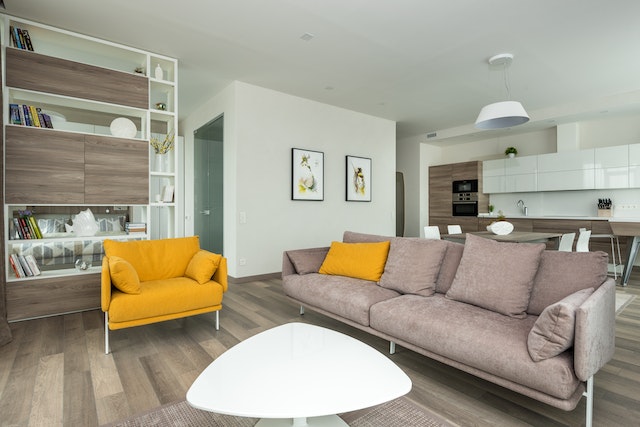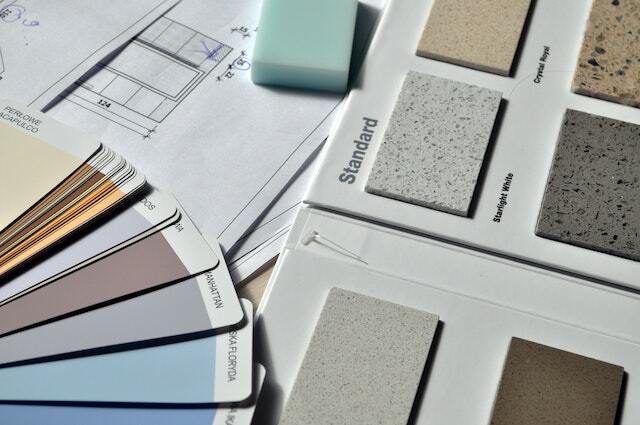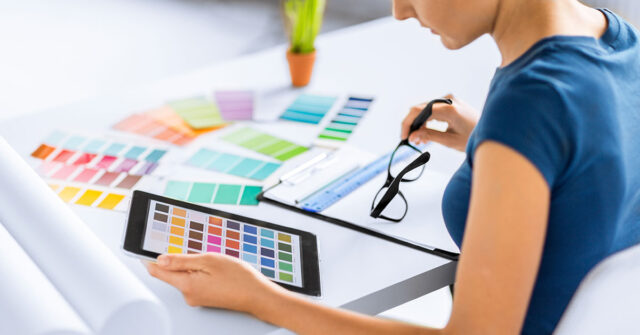In this guide, we will take a deep dive into the world of interior design, focusing on the styles that have gained popularity in Australia.
We’ll discuss how to identify your personal style, explore the defining characteristics of each design style, and provide practical tips to help you incorporate these elements into your home.
Whether you’re looking to revamp your current space or start from scratch with a new home, this guide has you covered.


Introduction to Interior Design Styles
Interior design goes beyond mere aesthetics. It’s about creating spaces that not only look good but also feel good.
Each design style has its unique vibe, from the cosy and comfortable appeal of Scandinavian style to the clean and sophisticated lines of mid-century modern design.
Understanding these styles can help you create a space that reflects your personality and meets your needs.
The Importance of Interior Design
Interior design plays a crucial role in enhancing the functionality and aesthetic appeal of your space. It helps to create a cohesive look, balance various elements, and ensure that your home is not just beautiful but also comfortable and functional. Moreover, it enables you to inject your personality into your space, making it truly yours.
Understanding Your Personal Style
Your personal style is an expression of your tastes, preferences, and lifestyle. It’s an integral part of creating a home that feels uniquely yours.
To identify your personal style, you’ll need to take into account your likes and dislikes, the way you live, and the kind of atmosphere you want to create in your home.
Defining Your Aesthetic
Your aesthetic is your personal interpretation of beauty. It’s influenced by various factors, including your lifestyle, experiences, and the environment you grew up in.
To define your aesthetic, think about what colours, textures, and styles you’re naturally drawn to. Consider the kind of mood you want to evoke in your home and how you want the space to function.
Finding Inspiration
There are many ways to find design inspiration. You can start by looking at design magazines, websites, and social media platforms like Pinterest and Instagram.
You can also visit furniture and home decor stores to get a feel for different styles and see what resonates with you.
Remember, the goal isn’t to copy a design you like but to draw inspiration from it and make it your own.
Popular Interior Design Styles in Australia
Australia’s interior design landscape is diverse and vibrant, with influences from different eras and cultures.
Some of the popular styles include Scandinavian design, mid-century modern design, coastal design, industrial design, and the Hamptons style.
Each of these styles has its unique characteristics, and we’ll delve into each one in the sections below.
Scandinavian Design
Scandinavian design is known for its simplicity, functionality, and warmth.
It’s about creating a cosy and inviting atmosphere with minimal clutter, an understated colour palette, and a mix of natural materials and textures.
Key Elements of Scandinavian Design
Key elements of Scandinavian design include neutral colours, natural light, minimalist furniture, and natural materials like wood and leather.
Functional pieces that serve a purpose are preferred over decorative items, and clutter is kept to a minimum.
Achieving the Scandinavian Look
To achieve the Scandinavian look, start by decluttering your space and choosing a neutral colour palette of whites, greys, and beiges.
Opt for furniture with clean lines and natural materials, and let plenty of natural light in. Add warmth with cosy textiles like rugs, throw blankets, and cushions, and include a few plants for a touch of nature.
Mid-Century Modern Design
Mid-century modern design is a style that originated in the mid-20th century and is characterized by clean lines, organic shapes, and a mix of different materials.
This style is all about functionality and simplicity, with an emphasis on form following function.
Key Elements of Mid-Century Modern Design
The key elements of mid-century modern design include clean lines, organic shapes, a mix of traditional and non-traditional materials, and a juxtaposition of different and sometimes contrasting materials.
The colour palette tends to be varied, with both neutral shades and bold colours.
Achieving the Mid-Century Modern Look
To achieve the mid-century modern look, start by incorporating furniture pieces with clean lines and organic shapes.
Use a mix of different materials, such as wood, metal, and glass, and play with contrasts. Add pops of colour with accent pieces, and choose functional, streamlined pieces over ornate, decorative items.
Coastal Design
Coastal design is inspired by the beach and the ocean, and it’s all about creating a light, airy, and relaxed space.
It’s a style that’s particularly popular in coastal regions of Australia but can be adapted to any home for those looking to bring a bit of the beach vibe into their space.


Key Elements of Coastal Design
Key elements of coastal design include a light and breezy colour palette, natural materials like wood and rattan, nautical-themed decor, plenty of natural light, and a relaxed, informal vibe.
Achieving the Coastal Look
To achieve the coastal look, start with a light and breezy colour palette, incorporating shades of white, blue, and sandy neutrals.
Opt for furniture pieces in natural materials and add nautical-themed decors like shells, driftwood, and nautical stripes. Let in plenty of natural light, and aim for a relaxed and informal atmosphere.
Industrial Design
Industrial design is a style that’s inspired by the look and feel of factories and industrial spaces.
It’s characterised by the use of raw and unfinished materials, a neutral colour palette, and an emphasis on functionality.
Key Elements of Industrial Design
The key elements of industrial design include raw and unfinished materials like brick, metal, and concrete, exposed architectural elements like beams and ducts, a neutral colour palette, and functional, utilitarian furniture.
Achieving the Industrial Look
To achieve the industrial look, incorporate raw and unfinished materials into your space, and don’t shy away from exposing architectural elements.
Choose furniture that’s functional and straightforward, and stick to a neutral colour palette. To soften the look, add a few cosy textiles and warm lighting.
Hamptons Style
The Hamptons style is inspired by the upscale beach houses in the Hamptons, New York.
It’s known for its sophisticated yet casual vibe, with a light and breezy colour palette, natural materials, and an emphasis on comfort and relaxation.
Key Elements of Hamptons Style
The key elements of the Hamptons style include a light and airy colour palette, natural materials like wood and linen, sophisticated furniture pieces, plenty of natural light, and a relaxed and comfortable atmosphere.
Achieving the Hamptons Look
To achieve the Hamptons look, start with a light and breezy colour palette, incorporating shades of white, cream, and soft blues.
Choose sophisticated furniture pieces in natural materials, and create a relaxed and comfortable atmosphere with plenty of plush textiles.
Natural light is key in Hamptons design, so let in as much of it as possible.
Working with Interior Designers
Working with an interior designer can be a rewarding experience.
As they truly understand the principles of interior design, they can help you identify your style, source unique pieces that fit your vision, and create a cohesive look that ties your whole space together.
But to get the most out of this collaboration, it’s essential to understand what the process involves and how to choose the right designer for you.


Finding a Local Interior Designer
Finding the right interior designer is a critical step in your design journey. You can start by asking for recommendations from friends or family who have worked with designers in the past.
You can also search online, visit design shows, or use platforms that connect clients with designers.
When evaluating potential designers, look at their portfolio to see if their style aligns with yours, and don’t hesitate to ask for references or client testimonials.
What to Expect When Working with a Designer
Working with a designer involves a series of steps, including initial consultation, the development of a design concept, the selection of furniture and materials, and the implementation of the design.
The designer will guide you through the process, helping you make decisions and ensuring that everything comes together as planned.
Communication is key in this process, so make sure to express your ideas, preferences, and concerns openly.
DIY Interior Design
While working with a professional designer can be beneficial, it’s not the only route to a beautifully designed home.
If you’re on a budget or enjoy the process of decorating, DIY interior design can be a fulfilling option. With the right resources and a clear plan, you can create a space that looks professionally designed.
Tips for DIY Design
If you’re embarking on a DIY design project, start by defining your style and creating a clear plan. Sketch out your ideas, make a list of items you need, and create a budget.
Then, start shopping for furniture and decor. Remember to measure your space carefully to ensure everything fits perfectly. Finally, don’t be afraid to experiment and make the space your own.


Recommended Resources for DIY Design
There are numerous resources available to help you with your DIY design project. Online platforms like Pinterest and Instagram can provide plenty of inspiration.
Websites and blogs dedicated to interior design can offer tips and guides. Additionally, home decor stores often have design consultants who can provide advice and suggestions.
Keeping Up with Trends
While it’s essential to create a space that reflects your personal style, it’s also beneficial to be aware of the latest design trends.
Trends can offer fresh inspiration and new ideas, helping you keep your space looking modern and up-to-date.
How to Incorporate New Trends
When incorporating new trends into your home, the key is balance. Use trends as a source of inspiration, but don’t feel obligated to incorporate every single one.
Choose the trends that resonate with you and blend with your personal style.
You can incorporate trends in subtle ways, through accent pieces, colours, or accessories, rather than making significant changes to your home’s architecture or primary furniture pieces.
Conclusion
Interior design is a dynamic field with an array of styles and trends to choose from.
Whether you prefer the cosy feel of Scandinavian design, the clean lines of mid-century modern, the relaxed vibe of coastal design, the raw appeal of industrial design, or the sophisticated casualness of Hamptons style, the key is to make your space uniquely yours.
By understanding different styles, working with a designer, or undertaking a DIY project, you can create a home that reflects your personal style and meets your needs.
Remember, your home should tell your story, so don’t be afraid to experiment and let your personality shine through your design choices.





